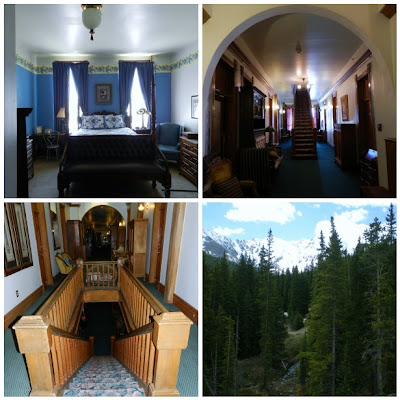Established in 1859, during the Pikes Peak Gold Rush, historic and beautiful Georgetown sits at an elevation of 8530 feet, nestled in the mountains west of Denver (about an hour's drive) along I-70. Although a small town today, Georgetown was a historic center of the mining industry in Colorado during the late 19th century, earning the nickname "Silver Queen of Colorado".
It has evolved into a lively summer tourist center today, with many preserved structures from the heyday of the Colorado Silver Boom. Georgetown has managed to keep its Victorian charm with many homes and buildings rich in this architectural style.
The architecture of Georgetown is certainly something to "ooh and aah" over. Historic Georgetown, Inc. has initiated and encouraged efforts to preserve the rich heritage of the Georgetown/Silver Plume National Historic Landmark District.
The organization purchased the Hamill House, the home of Englishman William Hamill, a successful mine owner, banker and politician of 19th century Colorado, and has restored this amazing and elegant home as a museum. Hamill House at Historic Georgetown.org (link)
Georgetown is nestled in between some of the most majestic peaks in the State (in mountaineering terms in the United States, a fourteener (or "14er") is a mountain peak that exceeds 14,000 feet (4267.2 meters) elevation. Colorado has 53 fourteeners), which of course means endless trails to pedal & climb, slopes to ski, streams to fish, raft & paddle.
Ride the Georgetown Loop Railroad (link) to nearby Silver Plume, and back. Georgetown has an interesting mining history and this narrow gauge train once served as the main form of transportation from Denver for both freight and passengers - they also do a Santa Express train in the winter. Shop along Main Street, relive history, enjoy accommodations to relax in, and eat in some of the finest restaurants around…as well as skiing in the winter, being only minutes away from world class ski areas.
(My dad under the Kneisel & (more importantly) ANDERSON storefront sign on the main street)
(Flower boxes line the fronts of the shops downtown; the instructional sign was in the window of an antique store; our Colorado and American flags, alongside a Georgetown flag...all three flying majestic, and free, against that beautiful, blue CO sky).
I can highly recommend the food at The Happy Cooker - world famous (OK, locally anyway...perhaps world famous) for their delightful European waffles, homemade breads, soups, chilies and desserts. Located on 6th Street, we sat in the outdoor garden patio, across from the beautiful...
Hotel de Paris Museum (link)
If you go, do take the time to drive through the residential areas of town, and experience the beautiful restorations of some of the old, original “gingerbread” houses. By mid-September, the Guanella Pass Scenic & Historic Byway is one of the premier places to view the turning of the aspens - it's equally spectacular throughout the rest of the year. For more info on Georgetown, and the surrounding areas, visit Georgetown Colorado.com.






































